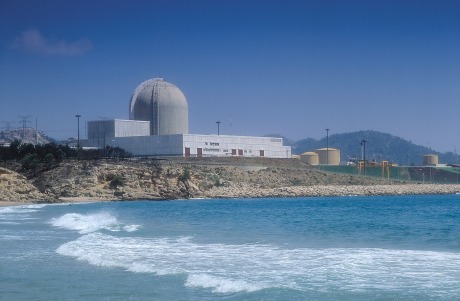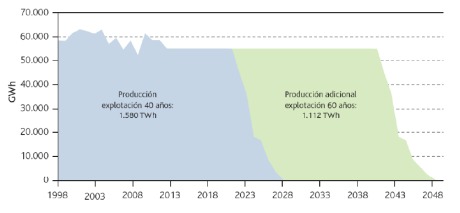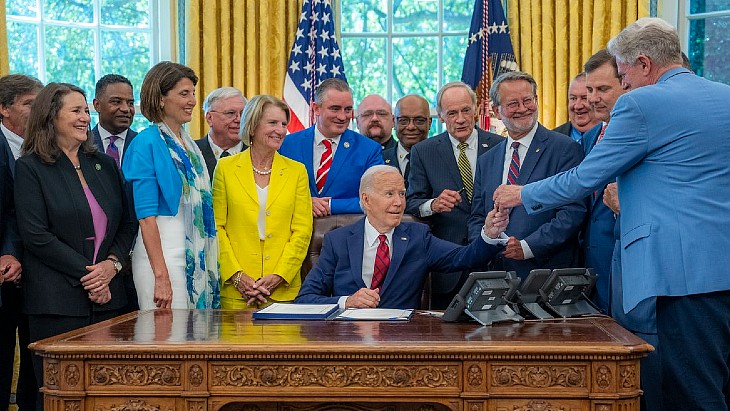Postponing retirement in Spain
 Capitalising on a more positive political outlook, Spain's nuclear industry group has made the case for longer operating lives for the country's reactors based on commercial and safety imperatives.
Capitalising on a more positive political outlook, Spain's nuclear industry group has made the case for longer operating lives for the country's reactors based on commercial and safety imperatives.  |
| Vandellos II: Stick to closure in 2020 or operate until 2047? |
Capitalising on a more positive political outlook, Spain's nuclear industry group has made the case for longer operating lives for the country's reactors based on commercial and safety imperatives.
The country developed a nuclear sector in the mid-1970s in part to reduce both spending on fuel imports and reliance on a small number of international interconnectors. More recently the eight-unit nuclear fleet's contribution to avoiding carbon emissions has grown in importance.
However, nuclear legislation requires a ministerial decision before a reactor's operating licence can be renewed, and even allows the government to ignore advice from the independent safety regulator and order a shutdown for its own reasons.
This political risk hit the Garona plant in 2009. After regulators approved operation until 2019, subject to certain upgrades as well as strict regular checks, ministers were unwilling to extend operation much beyond 40 years and decided to set a shutdown date of 2013. Now, following a change of government in November 2011, ministers have openly declared their intention to rule on nuclear matters on the basis of safety grounds only. Garoña's licence renewal is undergoing review, with revertion to 2019 shutdown a distinct possibility.
In a report on 16 March the Spanish Nuclear Forum, Foro Nuclear, described it as "unfortunate" that the concept of a 40-year operating life "has been so deeply rooted in institutions, associations and national organizations." In this context Foro Nuclear's report describes the routine international practice of renewing and extending nuclear power plant licences. Foro Nuclear's president, María Teresa Domínguez Bautista, said the study was intended "to provide information on the benefits to society and the Spanish economy of the operation of nuclear power stations under renewed operating permits within the existing regulatory framework."
 |
| A large amount of extra power could come from existing plants |
Taking the example of a 20-year licence extension, as have been granted over 70 times in the USA, the principal benefit for Spain would be an additional 1.112 trillion units of low-carbon electricity from existing nuclear power plants.
According to Agustín Alonso Santos, author of the study and a professor emiritus of nuclear technology at the Polytechnic of Madrid, sourcing this power from fossil fuels would cost in the range of €16.8-21.8 billion ($22.1-28.7 billion). Getting it from renewables might cost anything from €19.5 billion ($25.7 billion) to an incredible figure of €97.3 billion ($128.3 billion), according to Alonso Santos.
The prolonged use of current reactors could also mean putting off spending on replacement power plants of any kind until around 2040, compared to currently expected shutdown dates in the 2020s.
Foro Nuclear said, "It is essential to value the contribution of nuclear energy, both in the economic framework as part of the energy system, serving as an economic driver, and providing a power base with high availability and competitive prices." Permanent jobs for 2300 skilled nuclear power plant workers would be secured by extended operation, as well as 2500 contractors said Foro Nuclear.
Researched and written
by World Nuclear Newe










_50521.jpg)

